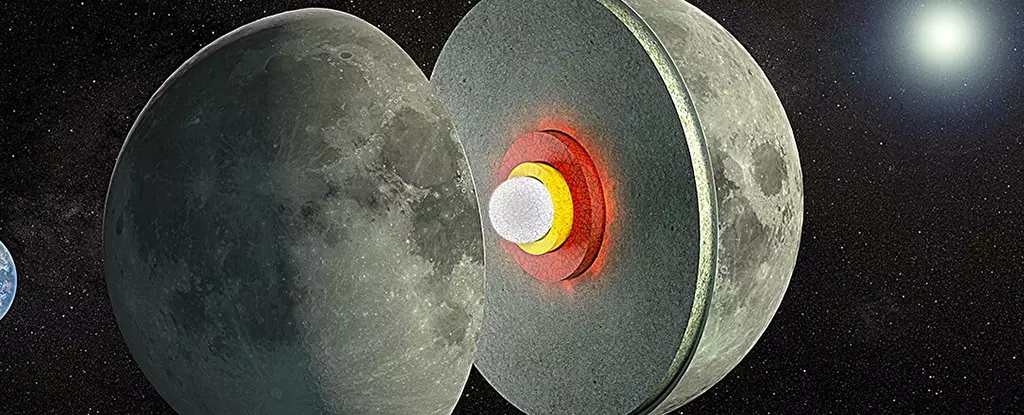Recent advancements in lunar science have shed light on one of the Moon’s enduring secrets—the nature of its internal structure. A comprehensive study conducted by researchers from the NASA Goddard Space Flight Center and the University of Arizona suggests that the Moon is not entirely solid, proposing the existence of a partially-molten layer situated between its rocky mantle and solid core. This hypothesis brings to the forefront important questions regarding the Moon’s geologic history and its thermal state, which have implications for future exploration and understanding of our natural satellite.
The impetus behind this intriguing revelation comes from a detailed analysis of the Moon’s gravity field and its changing shape due to the gravitational influences of both Earth and the Sun. The researchers meticulously examined new data sourced from NASA’s Gravity Recovery and Interior Laboratory (GRAIL) and the Lunar Reconnaissance Orbiter. This innovative research marks a significant leap in our ability to estimate the Moon’s tidal changes on a yearly basis, a feat previously unachieved.
The findings indicate that a low-viscosity zone (LVZ) at the base of the lunar mantle is key to understanding its geophysical properties. Unlike our oceans, which experience tidal movements due to the gravitational pull of the Moon, this LVZ suggests that the Moon itself is undergoing significant physical deformations. This dynamic behavior of the lunar interior raises intriguing questions about the Moon’s formation, its internal dynamics, and its interaction with both Earth and solar forces.
Delving deeper, the researchers posit that this partially molten zone is likely composed of minerals rich in ilmenite, a titanium-iron oxide mineral. This mineral composition aligns with characteristics observed in other celestial bodies, such as Mars, where initial seismic data has indicated similar partial melting processes. The existence of a ductile LVZ beneath the solid mantle creates a parallel between the evolutionary histories of the Moon and Mars, suggesting that both bodies may share common geologic processes.
The question of how this LVZ was formed remains open for exploration. One possibility is that residual heat, trapped from the Moon’s formative years, combined with the unique mineral makeup of its interior, has maintained a state conducive to partial melting. It invites further inquiry into the thermal evolution of the Moon and the geological processes that govern its interior dynamics.
Understanding the Moon’s internal structure has long been a challenge, drawing comparisons with the complexities of Earth’s geology. The researchers underscore the importance of ongoing investigations and the promise of seismic readings from a prospective permanent lunar base. Such in-situ measurements could revolutionize our understanding of the Moon’s subsurface composition, ultimately leading to a clearer picture of its geological evolution over billions of years.
Additionally, these insights into the Moon’s mantle and core deepen our comprehension of not just lunar geology but planetary science as a whole. The shared characteristics among celestial bodies underscore the interconnectedness of geological processes across the solar system.
The discovery of a partially molten layer has profound implications for our understanding of the Moon’s thermal state and its evolution. As researchers continue to explore these dynamics, we may find that the Moon is not a passive satellite but an active geological body with a complex interior. This renewed understanding encourages not only scientific curiosity but also optimism for future lunar exploration missions.
The stakes are high as our nation and international organizations map out plans for sustained human presence on the Moon in the coming decades. Understanding the Moon’s internal structure, including the potential for a partially molten layer, may unlock valuable resources and pave the way for long-term habitation.
The study of the Moon’s internal structure continues to evolve, revealing layers of complexity beneath its surface. The newly proposed partially-molten layer could redefine our understanding of lunar geology and its implications for future exploration. As technology and scientific methods advance, we inch closer to fully deciphering the Moon’s mysteries, promising exciting discoveries that will enrich our knowledge of not just our celestial neighbor, but the broader dynamics of planetary bodies in our solar system.


Leave a Reply